The figure here shows a family of parallel equipotential surfaces (in cross section) and five paths along which we shall move an electron from one surface to another. (a) What is the direction of the electric field associated with the surfaces? (b) For each path, is the work we do positive, negative, or zero? ( c) Rank the paths according to the work we do, greatest first.
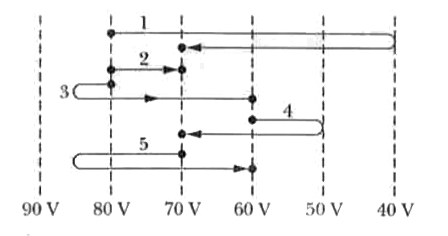
(a) rightward, (b) 1, 2, 3, 5: positive, 4, negative, (c) 3, then 1, 2, and 5 tie, then 4
Topper's Solved these Questions
- ELECTRIC POTENTIALBOOK - RESNICK AND HALLIDAYCHAPTER - ELECTRIC POTENTIALEXERCISE - (PROBLEMS)
47 Videos
- ELECTRIC POTENTIALBOOK - RESNICK AND HALLIDAYCHAPTER - ELECTRIC POTENTIALEXERCISE - (PRACTICE QUESTIONS) Single Correct Choice Type
21 Videos
- ELECTRIC POTENTIALBOOK - RESNICK AND HALLIDAYCHAPTER - ELECTRIC POTENTIALEXERCISE - SAMPLE PROBLEM 24.27 Electrostatic energy of two charged conducting shells, with and without earthing
1 Videos
- ELECTRIC CHARGES AND FIELDSBOOK - RESNICK AND HALLIDAYCHAPTER - ELECTRIC CHARGES AND FIELDSEXERCISE - Practice Questions (Integer Type )
3 Videos
- ELECTROMAGNETIC INDUCTIONBOOK - RESNICK AND HALLIDAYCHAPTER - ELECTROMAGNETIC INDUCTIONEXERCISE - PRACTICE QUESTIONS (Integer Type)
14 Videos
Similar Questions
In the figure of Checkpoint 1, we move the proton from point i to point fin a uniform electric field directed as shown. (a) Does our force do positive or negative work? (b) Does the proton move to a point of higher or lower potential?
View SolutionAn electron goes from one equi-potential surface another along one of the four paths shown in diagram. Rank the paths according to the work by the electrostatic force from the least to greatest.

View Solution
Knowledge Check
An electron goes from one equi-potential surface another along one of the four paths shown in diagram. Rank the paths according to the work by the electrostatic force from the least to greatest.
 A1,2,3,4B4,3,2,1C1,3 (4 and 2 equal)D(4 and 2 equal),3,1
A1,2,3,4B4,3,2,1C1,3 (4 and 2 equal)D(4 and 2 equal),3,1Figure shows. In cross section m three solid cylinders, each of length L and uniform charge Q. Concentric with each cylinder is a cylindrical Gaussian surface, with all three surfaces having the same radius. Rank the Gaussian surface according to the electric field at any point on the surface, greatest first.
 AI→II→IIIBII→I→IIICIII→II→IDall tie
AI→II→IIIBII→I→IIICIII→II→IDall tie
On the basis of your understanding of the following paragraph and the related studied concepts.
An equipotential surface is a surface with a constant value of electric potential at all points on the surface. The component of electric field parallel to an equipotential surface is zero, as the potential does not change in this direction. Thus, the electric field is perpendicular to the equipotential surface at each point of the surface. Further, say the direction of electric field electrical potential gradually fall with distance.
If a charge of 2 nC is taken from equipotential surface number 2 to 3, what is the amount of work done ?
View SolutionTwo identical plane metallic surfaces A and B are kept parallel to each other in air separated by a distance of 1.0 cm as shown in fig. Surface A is given a positive potential of 10V and the outer surface of B is earthed. (i) What is the magnitude and direction of uniform electric field between points Y and Z ?
(ii) What is work done in moving a charge of 20μc from point X to Y, where X is situated on surface A ?
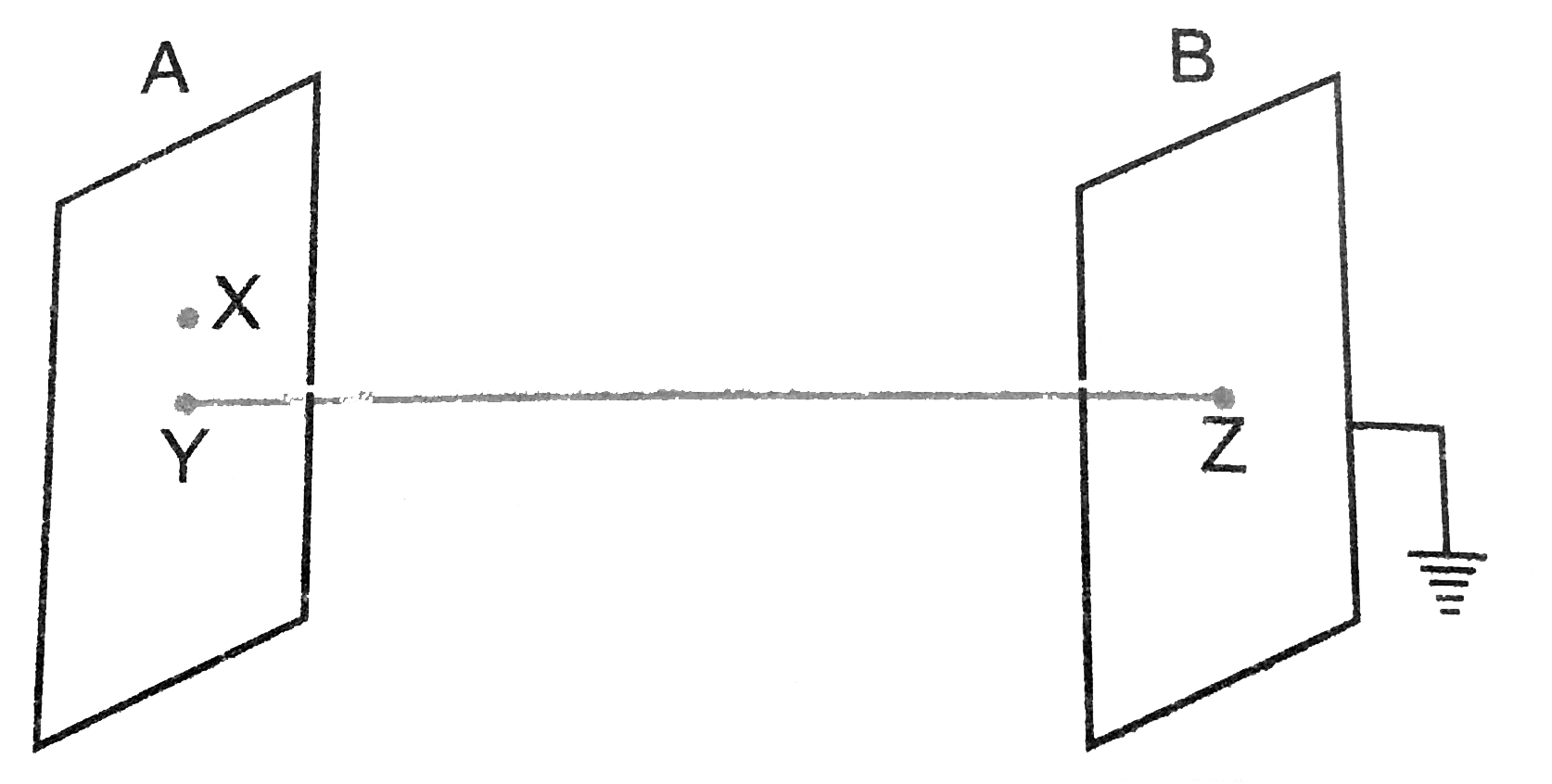
View SolutionFigure showns. In cross section m three solid cylinders, each of length L and uniform charge Q. Concntric with each cylinder is a cylindrical Gaussion surface, with all three surfaces having the same radius. Rank the Gussion surface according to the electric field at any point on the suface, greatest first.

View SolutionThe figure shows equipotential surfaces due to two poit charges +3Q and -Q placed at a separation d.
(a) Will the shape of epuipotential surface be spherical very close to both the point charges? What shape of equipotentials will be seen at very far away points from the pair of charges. (b) Find the distance of point P from the negative charge. (c) Find the potential of the surface marked as S1 is the figure. (d) Consider the surface having zero potential. Write the flux of electric field through this surface
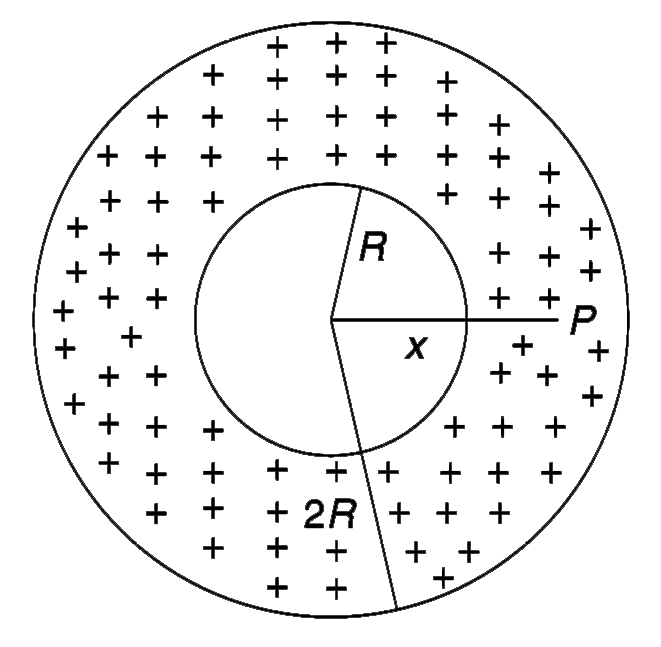
View SolutionThe figure here shows paths on a P-V diagram along which a gas can be taken from state I to state f . Rank the paths according to (a) the change ΔE≠t in the interenal energy of the fas (b) the work W done by the and (c ) the magnetic of the energy transferred as heat Q between the gas and its environment , greatest first .
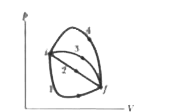
View SolutionA test charge 'q' is moved without acceleration from A to C along the path from A to B and then from B to C in electric field E as shows in the figure. (i) Calculate the potential difference between A and C. (ii) At which point (of the two) is the electric potential more and why ?
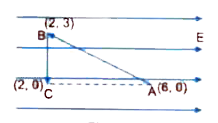
View Solution
